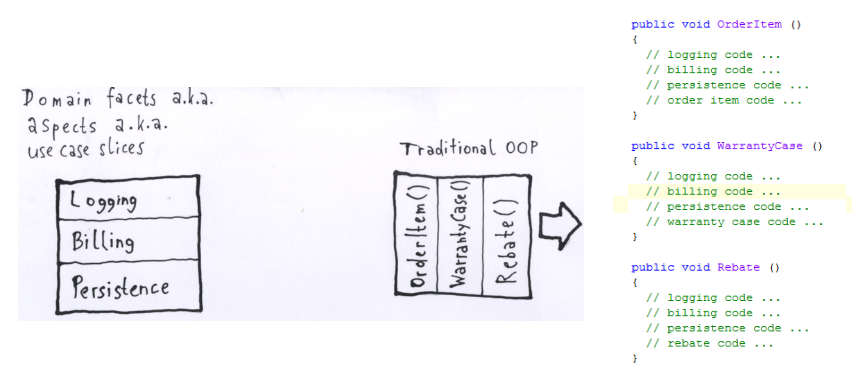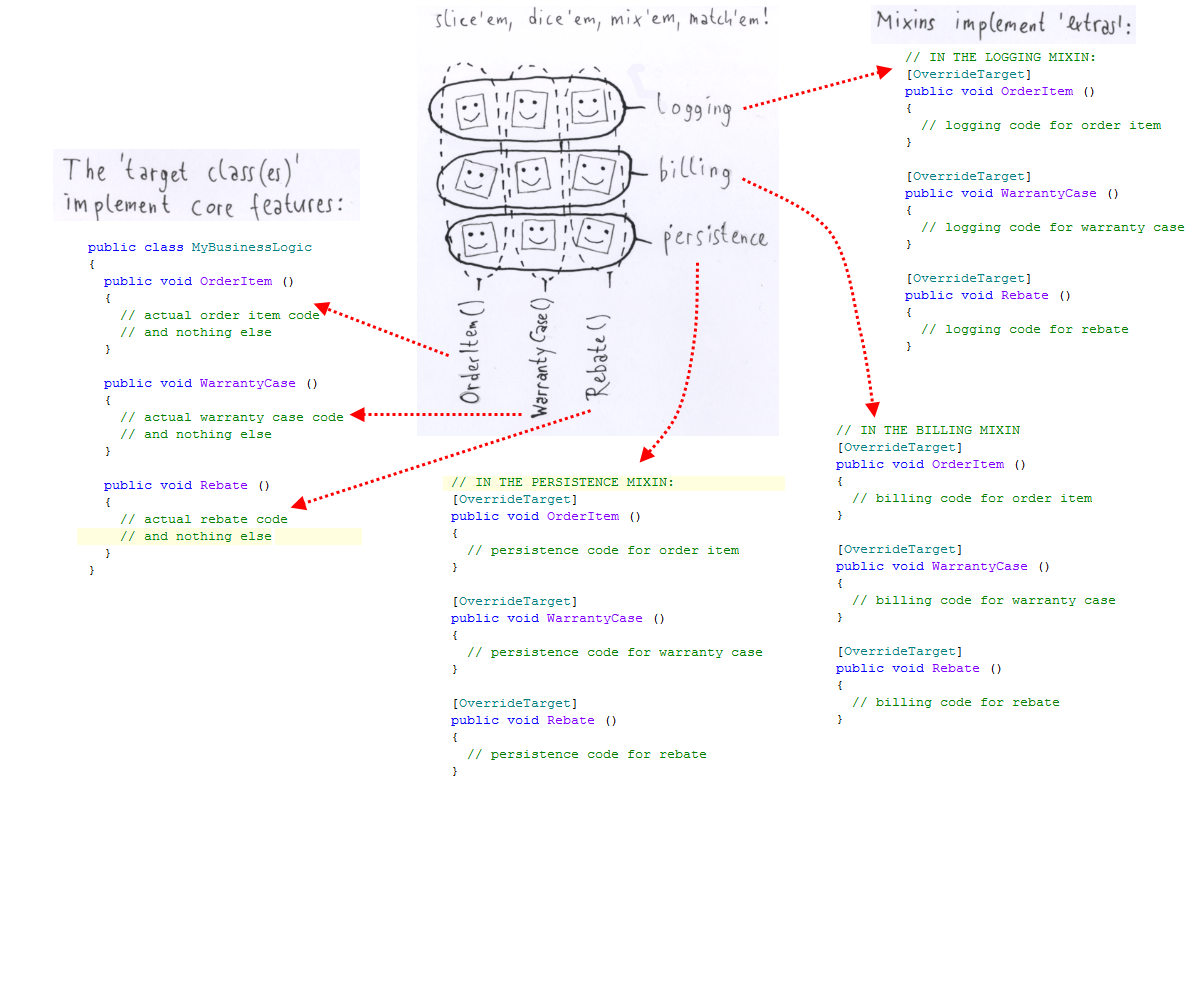Hotel mixin sample -- introduction
Aspect-oriented programming (AOP) gives the programmer facilities for slicing and dicing logic that go beyond class hierarchy and composition. This article introduces (re-motion) mixins as an alternative to AOP. We decompose a toy domain into use-case slices and use re-mix to
separate those slices in code. This domain - a concierge system for a hotel - is inspired by Ivar Jacobson's Aspect-oriented Software Development with Use Cases.
Slicing of applications with mixins takes practice (just like AOP), but the benefits are worth it – even for modestly sized applications.
What application programmers aim for in domain-driven design is to organize code along and around domain phenomena, not restrictions or
technical details of the implementation language and platform (wikipedia).
The common practice of specifying use-cases is older than the names for aspect-oriented programming or domain-driven design, but usually play a prominent role in both. A use-case explains how the software is used for a single, small and well-defined activity, and how the user interacts with the program in a certain role.
Unfortunately, common object-oriented programming techniques often make a mess in this regard, because you must spread the logic for a use-case over several classes and methods. Conversely, traditional object-oriented programming must lump together bits and pieces of several (often unrelated) use-cases in methods and classes. This clutters the logic. In extreme cases, "infrastructure" or "bureaucratic" code like logging and persistence, distracts from the actual meat of the software, the actual domain logic:
Ivar Jacobson uses aspects as the principal unit of organization in an aspect-oriented program, to modularize the facets of an application. We use (re-motion) mixins for the same purpose, and we believe that those are at least as well-suited for that purpose as AOP. Mixins make this modularization possible, because with (re-motion) mixins you can spread the logic for a class across multiple projects and recombine them (drawn as little smiling squares in the illustration above) at run-time:
The sample code discussed here explains how to do this. (The page Hotel mixinology builds on what
you can learn here about the sample, discusses the finer points of re-motion mixins and gives additional background.)

